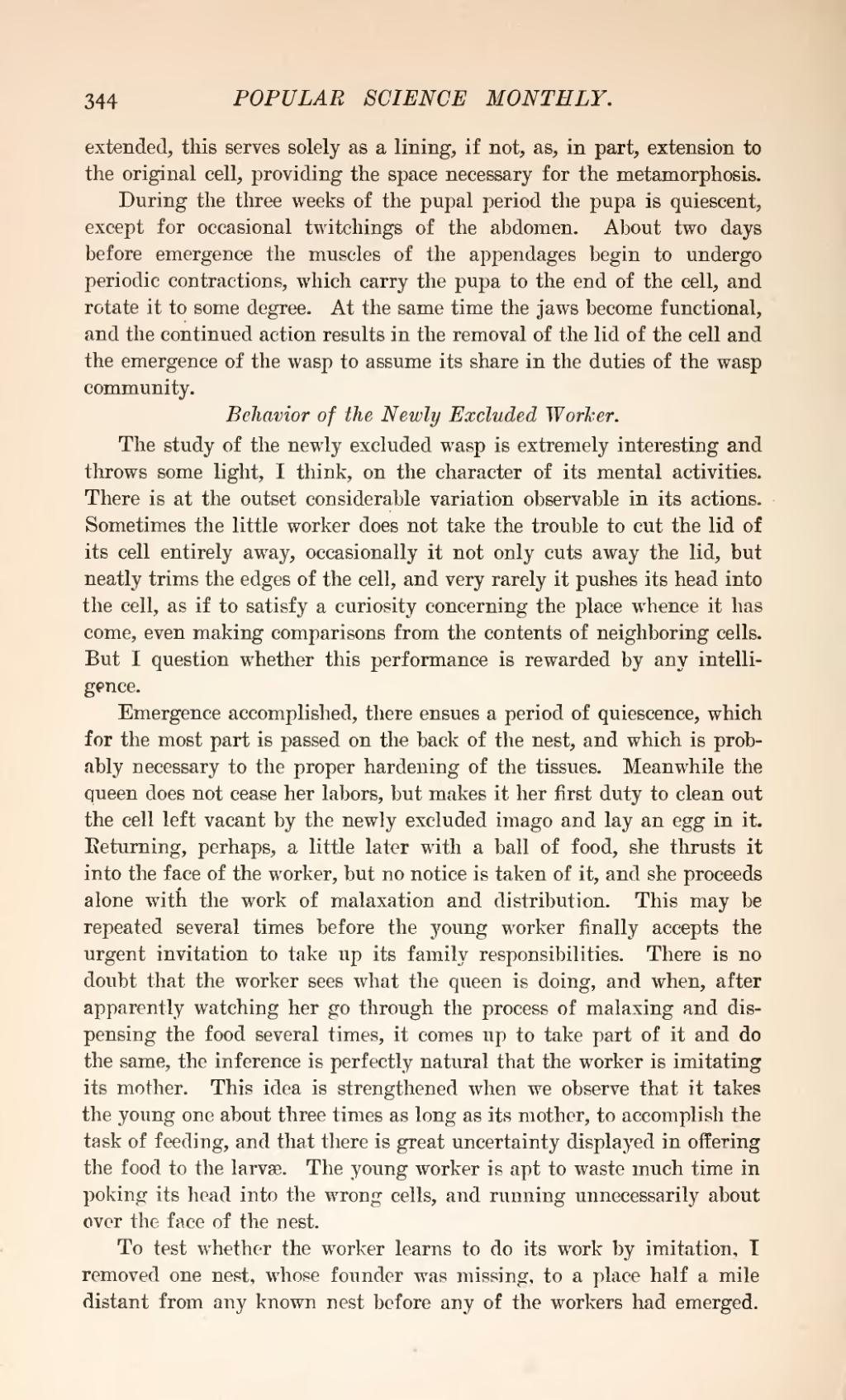extended, this serves solely as a lining, if not, as, in part, extension to the original cell, providing the space necessary for the metamorphosis.
During the three weeks of the pupal period the pupa is quiescent, except for occasional twitchings of the abdomen. About two days before emergence the muscles of the appendages begin to undergo periodic contractions, which carry the pupa to the end of the cell, and rotate it to some degree. At the same time the jaws become functional, and the continued action results in the removal of the lid of the cell and the emergence of the wasp to assume its share in the duties of the wasp community.
Behavior of the Newly Excluded Worker.
The study of the newly excluded wasp is extremely interesting and throws some light, I think, on the character of its mental activities. There is at the outset considerable variation observable in its actions. Sometimes the little worker does not take the trouble to cut the lid of its cell entirely away, occasionally it not only cuts away the lid, but neatly trims the edges of the cell, and very rarely it pushes its head into the cell, as if to satisfy a curiosity concerning the place whence it has come, even making comparisons from the contents of neighboring cells. But I question whether this performance is rewarded by any intelligence.
Emergence accomplished, there ensues a period of quiescence, which for the most part is passed on the back of the nest, and which is probably necessary to the proper hardening of the tissues. Meanwhile the queen does not cease her labors, but makes it her first duty to clean out the cell left vacant by the newly excluded imago and lay an egg in it. Returning, perhaps, a little later with a ball of food, she thrusts it into the face of the worker, but no notice is taken of it, and she proceeds alone with the work of malaxation and distribution. This may be repeated several times before the young worker finally accepts the urgent invitation to take up its family responsibilities. There is no doubt that the worker sees what the queen is doing, and when, after apparently watching her go through the process of malaxate and dispensing the food several times, it comes up to take part of it and do the same, the inference is perfectly natural that the worker is imitating its mother. This idea is strengthened when we observe that it takes the young one about three times as long as its mother, to accomplish the task of feeding, and that there is great uncertainty displayed in offering the food to the larvae. The young worker is apt to waste much time in poking its head into the wrong cells, and running unnecessarily about over the face of the nest.
To test whether the worker learns to do its work by imitation, I removed one nest, whose founder was missing, to a place half a mile distant from any known nest before any of the workers had emerged.
